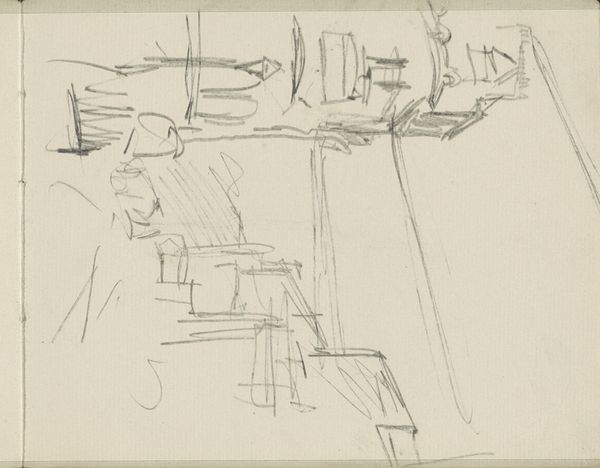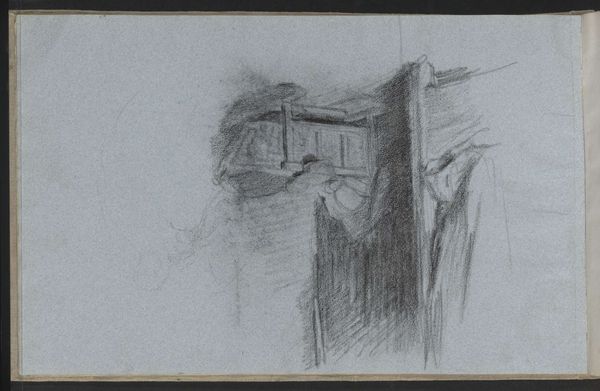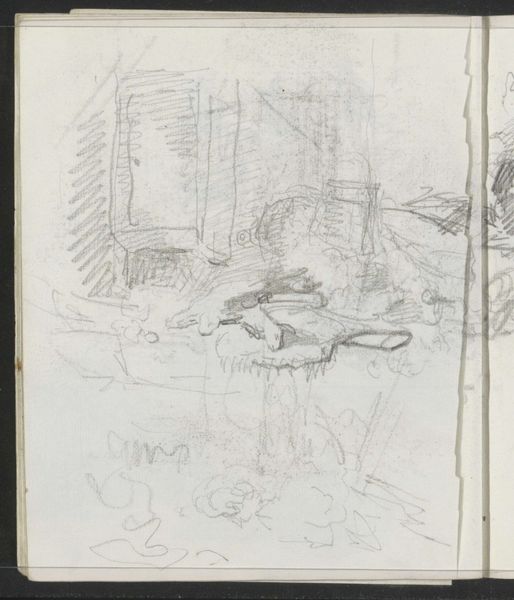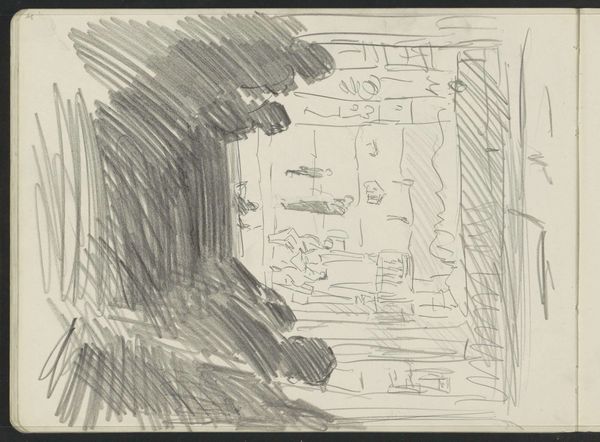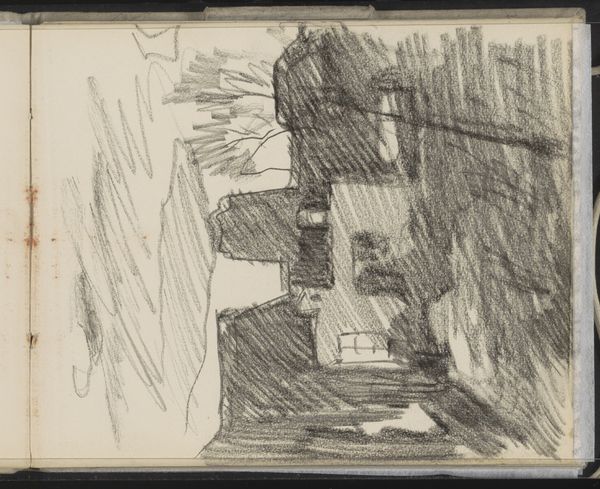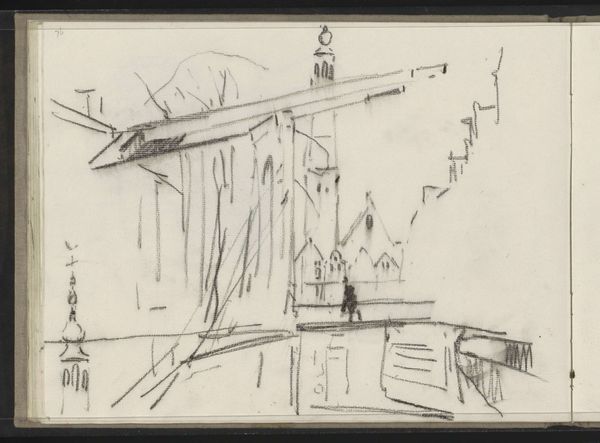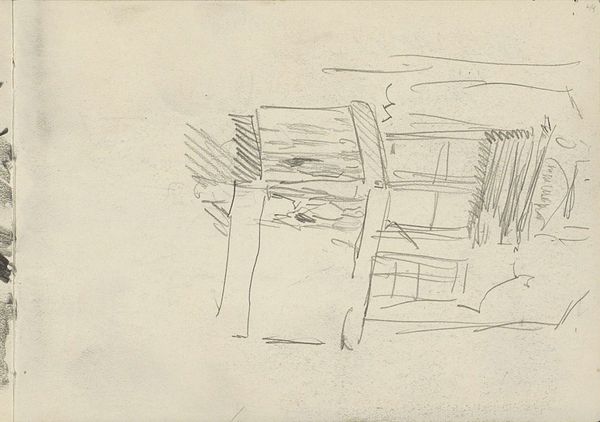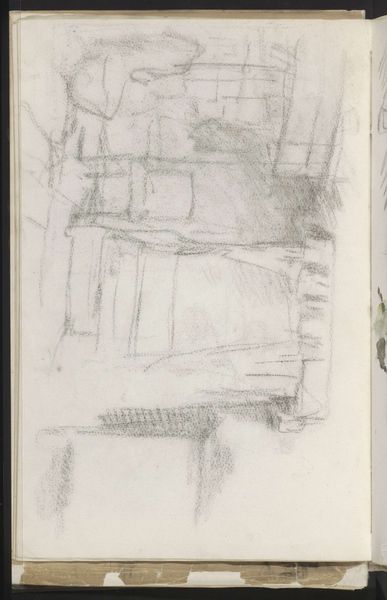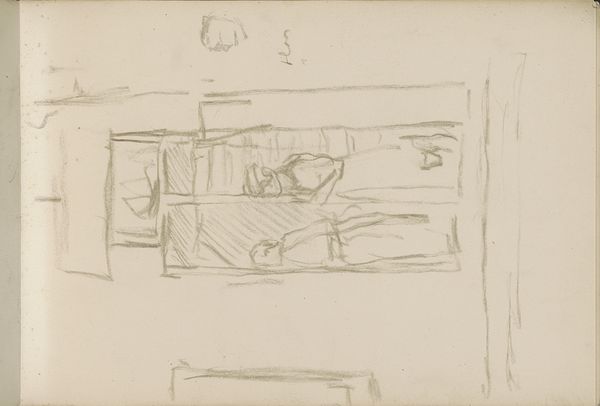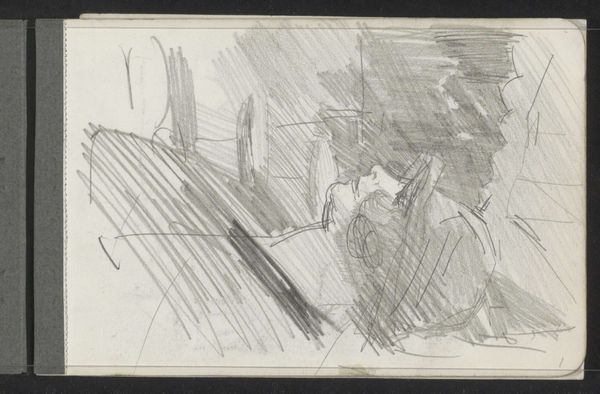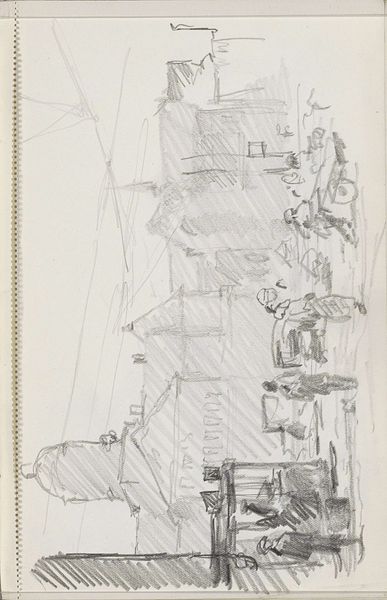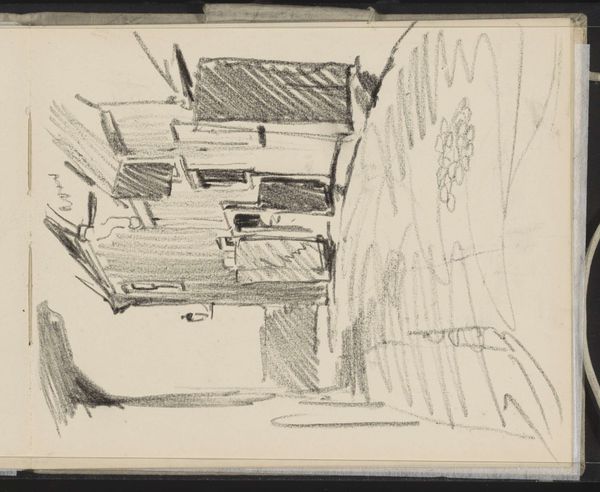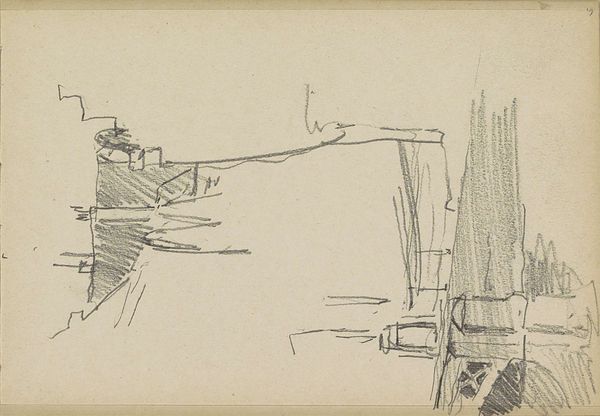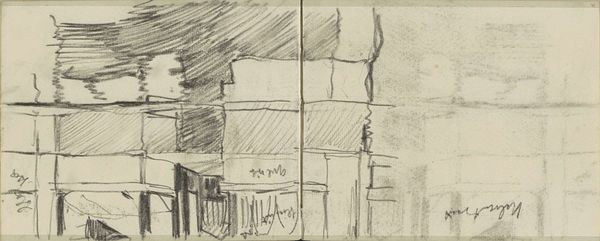
drawing, pencil
#
drawing
#
figuration
#
pencil
#
line
#
realism
Copyright: Rijks Museum: Open Domain
Editor: This drawing, "Interieur met een kind bij een raam," or "Interior with a Child by a Window," is attributed to Albert Neuhuys and was created sometime between 1854 and 1914 using pencil. It's housed here at the Rijksmuseum. I'm struck by the use of line in what appears to be an early study or sketch. What do you notice, focusing on composition? Curator: Observe the stark lines contrasting with areas of dense hatching. Note how the artist articulates form. Do you perceive the function of negative space here? Editor: I see that the window is the major vertical element in the background with many rectangles composing its panes. I am also looking at how Neuhuys utilizes implied lines, particularly in the space surrounding the child, who also reads as a vertical element, perhaps unifying the drawing’s structure? Curator: Precisely. The line work itself is paramount. It invites us to consider its capacity to define, delimit, and also evoke volume and texture. There is no value without line in this piece. Editor: Right. So by exploring this network of lines, Neuhuys encourages the viewer to construct relationships, even stories within the piece based only on his formal language? Curator: Exactly. What appeared to be a quick study or preparatory sketch instead reveals a deliberate, though spare, exploration of line, form, and structure in its most elemental mode. Editor: That’s an excellent observation! I’ll definitely reconsider the significance of preliminary drawings after that, considering how this reveals a focused visual structure of meaning-making. Curator: Indeed, there is beauty in that elemental distillation.
Comments
No comments
Be the first to comment and join the conversation on the ultimate creative platform.
